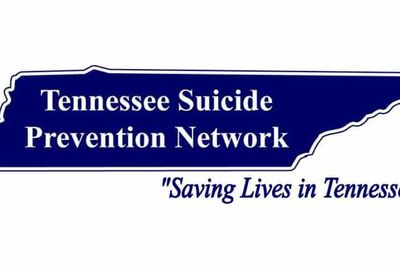The Tennessee Suicide Prevention Network is saddened to learn of a suicide death affecting Nashville’s GLBTQ community.
It is not always certain what causes a person to take their own life. We do know that suicide is almost never the result of one event or circumstance—it is typically the result of several factors acting at once that make someone feel trapped, like they have nowhere to turn and suicide is their only option.
We also know that most victims of suicide suffer from some form of mental or physical illness. One of the worst risk factors for suicide is depression, a disease which affects more than 15 million Americans yearly (according to the Anxiety and Depression Association of America). The very nature of depression can impede a person’s ability or desire to get help. Its victims often suffer—and occasionally even die—in silence.
Additionally, it is a well-known fact that GLBTQ individuals, especially young adults, are at an increased risk of suicide due a wide variety of factors. Studies suggest that the rate of suicide attempts among GLBTQ youth may be four times higher than the overall rate.
Suicide is preventable. Most suicidal people desperately want to live; they are just unable to see alternatives to their problems. Most suicidal people give definite warning signals of their suicidal intentions; but others are often unaware of the significance of these warnings or unsure what to do about them. Furthermore, the historical and social stigma attached to it impedes awareness of the severity of the problem, blunts acknowledgement or recognition of individual warning signs, and limits knowledge of how to help a suicidal person. The traditional concept of suicide as sin can actually deepen the hopelessness and helplessness of suicidal people.
Even though more Americans die from suicide than from homicide, and even though half a million people every year need emergency room treatment as a result of attempted suicide (according to the Center for Disease Control and Prevention) suicide remains a taboo subject.
To reduce the frequency of suicide, this silence and secrecy must be broken. By stigmatizing suicide and refusing to acknowledge the problem of suicide, we unwittingly hinder its prevention.
The following behavioral patterns may indicate possible risk for suicide and should be watched closely. If they appear numerous or severe, seek professional help at once:
- Talking about suicide, death, and/or no reason to live
- Preoccupation with death and dying
- Withdrawal from friends and/or social activities
- Experience of a recent severe loss (especially a relationship) or the threat of a significant loss
- Experience or fear of a situation of humiliation of failure
- Drastic changes in behavior
- Loss of interest in hobbies, work, school, etc.
- Preparation for death by making out a will (unexpectedly) and final arrangements
- Giving away prized possessions
- Previous history of suicide attempts, as well as violence and/or hostility
- Unnecessary risks; reckless and/or impulsive behavior
- Loss of interest in personal appearance
- Increased use of alcohol and/or drugs
- General hopelessness
- Be faced with a situation of humiliation or failure.
- Unwillingness to connect with potential helpers.
Generally speaking, the suicide risk factors and warning signs for GLBTQ persons are largely the same for the population at large, but they are subject to several unique risk factors. An early, forced, mistimed, or forestalled coming-out process puts such an individual at increased risk. Research shows that LGB youth whose families strongly reject them are 8.4 times as likely to have attempted suicide as LGB peers who report no or low levels of family rejection. Harassment and discrimination within the community or workplace may also be a factor.
With public discourse, education, and awareness, each of us can play our part in reducing the frequency of suicide in our communities. The final exit is not the only exit. With proper diagnosis and treatment of depression, suicide and the terrible toll it takes is preventable.
***
Family and Children’s Services in Nashville operates a weekly support group for survivors of suicide. More information about the Survivors of Suicide group is available at survivors.suicide@fcsnashville.org or (615) 244-7444.
For more information on suicide, its causes, and resources on suicide and mental illness, refer to any of the following agencies:
TSPN: (615) 297-1077 or www.tspn.org
Mental Health America: www.nmha.org
Centers for Disease Control: www.cdc.gov/safeusa/suicide.htm
American Association of Suicidology: www.suicidology.org
Suicide Prevention Resource Center: www.sprc.org
If you or a loved one are suicide or severely depressed, contact the National Suicide Prevention Lifeline at 1-800-273-TALK (8255) to speak with a counselor in your area. TTY line: 1-800-799-4TTY (4889)
See also:
Stanley Green shares memories about his friend Kevin Watts
Nashville psychotherapist Barbara Sanders on coping with the death of Kevin Watts
